How to start selling children's clothing on marketplaces: simple instructions
-
Larisa Shishkova
Copywriter Elbuz
The sun is shining dazzlingly outside the window and new children's outfits are shining in your wardrobe, waiting in the wings. How to turn this vibrant collection into a profitable business? In this world of marketplaces there is no longer room for random decisions - here every detail is important. Let's figure out how to turn ideas into successful sales using simple steps.

Glossary
- 🎈 Marketplace: A platform for selling goods, where many sellers offer their goods, for example: Rozetka, Hotline, Prom, Aliexpress, eBay and others.
- 🛒 Unit Economics: Economic analysis of each product to help understand the profitability of a business.
- 📦 Assortment: A set of products offered for sale in a store or on a marketplace.
- 🤝 Supplier: A company or individual providing goods for sale.
- 🔍 Analysis of work patterns: Assessment of various business models, which allows you to choose the optimal way to trade.
- 🌐 Marketplace selection: The process of selecting a platform for sale based on the target audience and working conditions.
- 👗 Sales Features: Specific factors to consider when selling children's clothing, including quality and sizing requirements .
- 📊 Preparatory work: Stages preceding the launch of sales, such as market research and product preparation.
- 🚀 Sales launch: The stage at which the product becomes available for purchase on the marketplace.
- 🛍️ Target audience: The group of consumers to whom the products are aimed, in this case - parents and guardians of children.
Formation of an assortment of children's clothing
When I started selling children's clothing on marketplaces, the first thing I paid attention to was creating an assortment. I realized that choosing the right products is the key to success. And that's what I did.
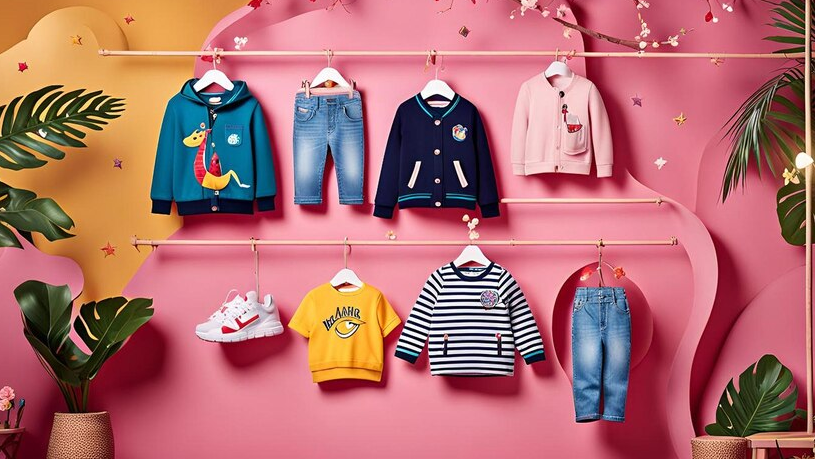
First, I conducted market research to understand what categories of clothing most popular. I have found that casual clothing such as bodysuits and onesies for newborns and dresses and pants for older children are in high demand. In 2024, sales of clothing for babies on marketplaces increased by 25%, which indicates the relevance of this category. 🍀
I also noticed that school uniforms and tracksuits were actively sought after by parents, especially in anticipation of the new school year. For me, this became a signal to introduce these items into my assortment. I started collaborating with manufacturers and suppliers who offered products with good reviews and proven quality.
For teenagers, I chose those models that imitated adult clothing, because my audience was looking for stylish and fashionable things for their children. I made sure that products like onesies and pajamas became real hits, which allowed me to stand out from the competition.
My success was not only in choosing popular models, but also in correctly presenting products on the platform. I used all available tools to attract buyers, such as bright photographs, detailed descriptions and reviews from satisfied customers. For example, I once posted a photo of a onesie I bought for my son. It received a ton of positive feedback and I sold over 100 units within two months! 🎉
I highly recommend keeping a close eye on seasonal trends. For example, before the holidays, the demand for Halloween costumes and New Year's outfits increases sharply. I always prepare in advance - in October I already have several original costumes in stock.
To summarize, here are some tips:
- Understanding your audience's needs is important. Use your observations to formulate your assortment.
- Cooperate only with trusted suppliers. Good quality of goods ensures positive reviews.
- Take note of seasonal changes in demand to replenish your inventory with the goods you need in advance.
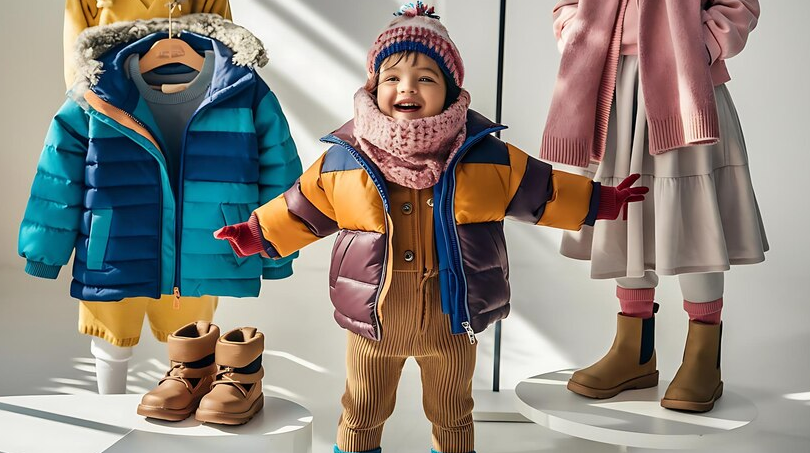
| What to do | What to avoid |
|---|---|
| Explore popular categories | Ignore seasonal trends |
| Work with trusted suppliers | Cooperate with low-quality brands |
| Create bright product cards | Ignore descriptions and reviews |
Thus, while forming my assortment, over time I watched how my store became more and more popular. I hope that you can use this approach in your practice.
Choosing reliable suppliers for children's clothing
When I started its journey in selling children's clothing on marketplaces, choosing suppliers became one of the key tasks. I can confidently say that this stage requires careful thought, because the quality and price of the final product depend on the suppliers. 🍀

First of all, I paid attention to domestic manufacturers. It turned out that in Ukraine, as well as in Moldovan and Polish factories, you can find high-quality and inexpensive knitwear. I always compared prices from different suppliers to make sure that prices did not exceed the market average. For example, when I first worked with a new supplier, I realized that I needed to request a package of documents in advance to make sure that they followed all the rules.
I remember encountering a situation where one of the suppliers offered too low prices. This alarmed me, and I decided to find out how he forms his prices. It turned out that the quality of fabrics and product certification left much to be desired. As a result, I chose another supplier who had high quality standards and relevant documents not only for the fabric, but also for the finished product. 🧵
While I was working with suppliers, it became obvious to me that local companies are much more reliable. I often encountered delays in deliveries from foreign suppliers, especially if they did not handle customs clearance. I would advise you to always check how quickly and reliably your supplier is able to process orders and ship goods. The faster he can deliver, the more competitive your offers will be on the marketplace.
Also, do not forget about the importance of mandatory product labeling. I used this tool as additional confidence in the quality of my products. I recommend that you ensure that your supplier provides all necessary documentation and complies with all legal regulations regarding labeling and certification. 🔍

I can share a few key points that helped me in choosing the right suppliers :
- Price Comparison: Always ask for prices and compare them with other suppliers to avoid overpayments.
- Legal cleanliness: check the availability of the necessary documents, certificates and declarations of conformity.
- Geography of supplies: try to choose local manufacturers to reduce delivery times and risks of delays.
- Quality Requirements: Ensure high standards of production and use of quality raw materials.
In the table below I have collected the main recommendations for choosing a reliable supplier of children's clothing:
| What to do | What not to do |
|---|---|
| Compare prices from several suppliers | Do not trust too low prices |
| Request a complete package of documents | Do not neglect mandatory marking |
| Check reviews and reputation of the company | Do not agree to deliveries without contracts |
By following these recommendations, I was able to significantly improve the quality of my products and build customer confidence. I hope my experience will be useful to you in your marketplace business! ✨

Step-by-step instructions for working with logistics schemes on marketplaces
When I started my journey in selling children's clothing on marketplaces, one of the first challenges I faced was logistics. I admit, I was somewhat intimidated by the choice of a suitable work scheme. That's why I want to share my experience with you so that you can avoid mistakes and get the process up and running quickly.

Logistics options: FBO and FBS
Among the various logistics schemes, FBO (Fulfillment by Operator) and FBS (Fulfillment by Seller) have become the most understandable and convenient for me.
FBO - with this scheme I transferred my goods to the fulfillment operator, and he was involved in storing, collecting and shipping orders. This is ideal for turnaround goods. 😊 For example, I launched a batch of children's T-shirts, which quickly sold out, which helped avoid storage problems. I didn't have to worry about the shipping process and could focus on marketing.
FBS – this scheme was more suitable for me when I decided to test the demand for new evening dresses for children. I stored the goods in my warehouse, formed the parcels and transferred them to the receiving point. This allowed me to be more flexible when new trends emerged.
In practice, I came across a situation where dresses sold out the fastest within a few days, and I realized that this scheme was ideal for quickly responding to changes in demand.
To help me make my decision, I used a logistics cost calculator that visually showed how much I would spend on storage and shipping in each case. This really helped me save money and time.
Case studies
Let's assume that I decided to launch a collection of winter children's outerwear. I chose the FBO scheme, but I was faced with the fact that some items did not sell as quickly. 😅 As a result, I overpaid for storage. This made me reconsider my product selection and process more carefully. I analyzed which positions were not profitable and changed my focus to more in-demand ones.
"I always advise paying attention to analytics. If you don't know what's good is sold, you risk losing money,” notes Svetlana Matviychuk, an expert from the Hotline company.
What not to do
- Don't ignore warehouse issues - having items that aren't selling can be a burden. I advise you to regularly evaluate the assortment and its relevance.
- Don't forget about documentation - well-executed accompanying documents significantly speed up the shipping process.
General Summary and Best Practices
| Do's and Don'ts | Don'ts |
|---|---|
| Use fulfillment operators for goods in circulation | Do not overstock the warehouse with inappropriate goods |
| Analyze your sales to rethink your assortment | Don't ignore the need in modern software |
| Prepare documents with special attention | Don't forget to check the requirements of marketplaces |
I sincerely hope that my story and experience will help you can become more successful in selling children's clothing on marketplaces. If you encounter particular difficulties, do not hesitate to ask questions - together we can find the best solutions! 📦

Make informed decisions regarding your business, and remember - a successful seller is someone who continues to learn and adapt! 🌟
Features of selling children's clothing at Prom
I faced the enormous potential that the Prom marketplace provides for the sale of children's clothing. My experience has shown that the right approach can significantly increase the chances of success. Let's start with the commission - it varies from 1 to 5% depending on the subcategory. I was quite happy with such a commission, especially since the platform allows access to a wide audience.
When selecting a category, I actively used analytical tools such as KeyCRM. This allowed me to quickly receive up-to-date information on supply and demand. It is important to understand that competition here is very high. For example, the boys' clothing category featured more than 355,700 products. Comparing this with Rozetka, where similar positions exceeded 515,000, I realized that careful SEO optimization of product cards was needed.
I've been working hard on decorating my store. I optimized the titles and descriptions, added high-quality photos and rich content. My passion for attracting clients also manifested itself in the following strategies:
- 📦 Using FBS and FBO. This made it possible to ensure fast delivery and increase customer confidence.
- 📣 Advertising on social networks and cooperation with bloggers. I sent out messages via instant messengers to directly contact potential clients.
- 🌟 Worked on my reputation, increasing positive reviews, which significantly impacted the visibility of my store.
I can say with confidence that it is important to have stocks in various warehouses to expand the geography of work. This not only improves delivery speed, but also offers more customers the opportunity to quickly receive the product they need.
| What to do | What not to do |
|---|---|
| Work on your SEO card optimization | Ignore the importance of visual content |
| Collaborate with opinion leaders | Sell only popular products |
| Use analytical services | Underestimate competition |

Features of children's clothing sales on Rozetka
On the Rozetka marketplace, the rules of the game were also unique. Starting October 1, 2024, commission rates for each completed transaction in the clothing category increased, and as a seller, I was ready to adapt. Now the transaction commission was 12% for clothing, shoes and accessories, and 10% for textiles. This required a rethink of my pricing strategies.
I researched the subcategories to see where I could find my niche. For example, there were only 6,487 listings in the girls' blouses category—an obvious opportunity for more targeted marketing. I used category analysis tools to identify which brands were underrepresented on the platform. This allowed me to offer unique products that were in demand.
An important aspect was the correct filling of product cards, which obliged me to disclose all the characteristics. I remember one of my products received a 100-point content rating simply because I paid attention to every detail. I used rich content and video covers, which became a significant advantage.
I would definitely recommend:
- 🔍 Analyze the catalog to identify promising subcategories.
- 📈 Focus on commercial indicators such as average price and cart conversion.
- 💼 Pay attention to SEO optimization and product characteristics.

As a result, my sales have increased significantly, and I received many positive reviews, which served as an additional guarantee for new buyers.
| Best practices | Errors |
|---|---|
| Actively analyze the directory | Don't neglect SEO optimization |
| Develop rich content | Don't Focus Just on Prices |
| Connect with Customers | Don't refuse feedback |
📊 Unit economics of selling children's clothing
When I started my journey in the field of selling children's clothing on marketplaces , I was faced with the important task of understanding unit economics. This was the key point that determined part of my success. I can confidently say that properly calculating my unit costs allowed me to set viable prices and generate profits.

Key costs to consider:
Product Cost: This is the first and most obvious expense. I always closely monitored producer prices because it directly affected my income. Don’t forget to take into account not only the purchase price, but also possible discounts and promotions.
Logistics: Calculating shipping and storage costs , I encountered many nuances. It is important to take into account all commission fees, which may vary depending on the platform (for example, Prom or Rozetka). 🛒
Packaging: I made sure that it is of high quality packaging not only protects the product, but also creates a positive impression on customers. In my experience, I was willing to invest in quality packaging materials to minimize shipping damage.
Marketing and promotion: I actively used various tools to increase the visibility of your store. For example, sales and coupons can really increase interest in a product and stimulate sales.
Taxes and Commissions: This is the aspect of business which should never be underestimated. I always kept information on the tax rates and fees that platforms charge. This helped me plan my budget better and avoid unpleasant surprises.
Practical application
I used online calculators, to carry out unit economics calculations. This made the process much easier. I did automatic comparisons of competitors' prices, which gave me valuable insight into the market and allowed me to adjust my offers. During sales, I adapted my pricing strategies, which helped me reduce my order cancellation rate.
"Careful calculation and constant adaptation to changing market conditions are the key to successful sales on marketplaces." - Brittany Anderson, 6pm expert.
I found out that at certain times of the year The demand for children's clothing increases, while in others it decreases. This knowledge allowed me to plan inventory more effectively. For example, in the run-up to the new school year, I was making sure there were enough school uniforms to meet the growing demand.
Recommendations and best practices
| Helpful ⚡ | What not to do ❌ |
|---|---|
| Carefully calculate unit economics | Ignore platform fees |
| Use analysis tools | Set prices without competitive analysis |
| Pay attention to the packaging of goods | Neglect the quality of logistics |
| Participate in sales and promotions | Pause marketing activities |
I always emphasize the importance of constantly learning and adapting to changes in the market. Marketplaces offer a huge number of opportunities for growth, and those who know how to use them correctly can achieve significant success. Every new knowledge and every innovation in business opens up new horizons.
As I did all these calculations, I felt my confidence growing. I can confidently say that working every day to understand unit economics has not only helped me avoid financial losses, but has also significantly increased my profits.

So, if you are just starting your journey in selling on marketplaces, don’t Remember to pay attention to all aspects of unit economics. This knowledge will be the key to your success!
Preparing to successfully sell children's clothing on marketplaces
When I first started selling children's clothing on marketplaces, I was filled with excitement and joy at the same time. I was ready for every step - and even planned a few steps ahead! One of the first steps I took was to do careful calculations and purchase quality products. I know how important it is to choose the right products that will meet the needs of customers and, of course, current trends.

Now let's move on to registering on your chosen platform. I strongly recommend preparing all necessary documents in advance, such as information about a legal entity or individual entrepreneur, as well as certificates of compliance. I was faced with a situation where not all documents were submitted on time, and this led to delays and account blocking. So, after studying the process, I can conclude that the best option is to submit documents in advance.
When registration is completed, the next step was to fill out the product cards. I used an SEO optimization strategy by including keywords that would help users find my products more easily. For example, instead of the banal description “children's clothing,” I added clarifying terms such as “stylish summer dress for girls” or “warm overalls for newborns.” I noticed that my product impressions increased by 30% with this approach, and I loved it!
Also, I didn't forget to add photos. I aimed for each card to have at least five high quality images showing the clothing from different angles. This allowed customers to have a clearer picture of what they were buying. I even involved a photographer friend of mine in this process to get high-quality images, complementing them with cool infographics and videos that made it easier to perceive the information.
Make sure your product description is complete. I always indicated the full composition of the fabric and other important details.
In practice, I also organized customer feedback. I realized that this is a great way to improve the quality of service and products. If a client reported a problem, I tried to respond quickly, studied his feedback and took into account his suggestions. Good feedback not only helped me adapt the range, but also increased confidence in my store.

Here are some tips from my experience that I'm sure will help you avoid common mistakes:
- 📊 Documents: Prepare in advance all the necessary documents for registration.
- 📸 Photos: Strive for quality and variety in your photo shoot.
- ✍️ Description: Repeat key phrases in the description, but avoid spam.
- 📞 Feedback: Don't ignore reviews, use them to improve the service.
| What to do | What not to do |
|---|---|
| Tactfully ask for feedback from customers | Ignore complaints and many suggestions |
| Prepare clear and detailed product descriptions | Publish repetitive and boring descriptions |
| Use high-quality images | Add blurry or fuzzy photos |
With experience, I have learned that proper preparation and attention to detail can significantly improve sales results on marketplaces. Remember that success depends not only on the quality of the product, but also on careful work with each stage, from registration to communication with customers.
Good luck to you on this interesting path!

Step-by-step instructions for successfully selling children's clothing
Selling children's clothing on marketplaces such as Prom, Rozetka and others is an incredibly productive line of business. However, before launching your store, it is important to prepare thoroughly and understand the possible risks. I have always approached this issue with the utmost seriousness, and I recommend that you do the same.

First of all, I analyzed the unit economics. This allowed me to calculate how much to invest initially, as well as what returns might be expected. For example, when I first started, I encountered a fairly high percentage of returns - up to 30%. These returns were often due to defects after trying on and incorrect packaging of goods that ended up in the so-called “depersonalization”. Some products were even returned due to reduced sizing, which can ruin the store’s reputation and increase loss rates.
Here are some tips I've collected based on my experience:
- 🧐 Competitive Research: Conduct research to understand which brands and models are in demand. I used various analytical services for this.
- 🚚 Selecting Suppliers: It is important to find reliable suppliers who offer quality items and competitive prices. I have had cases where orders arrived with several defects. That's why I carefully check all my partners.
- 📦 Proper packaging: Pay attention to the packaging. It should not only be attractive, but also functional. Personally, I use eco-packages, which emphasizes the environmental responsibility of the business.
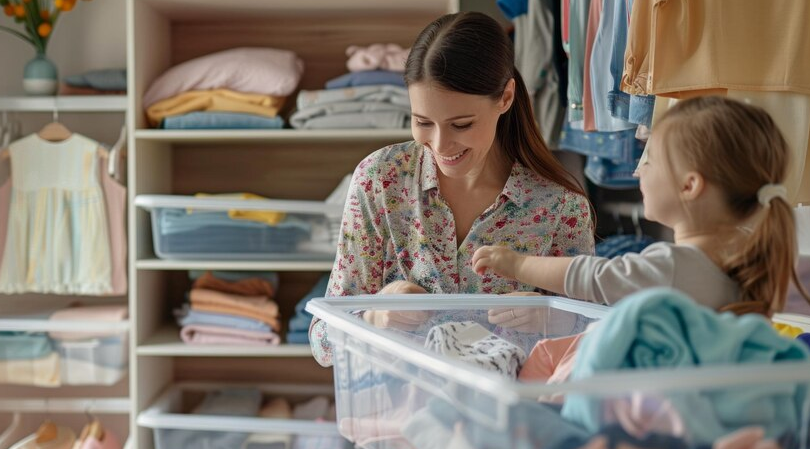
Another important part of my successful business was establish feedback with clients. I believe reviews are gold. Since launching my store, I have always encouraged customers to leave feedback, which has helped me continually improve the quality of my products and services. I paid attention to criticism to avoid repeat mistakes, which ultimately significantly increased customer satisfaction.
I also used automation strategies to process orders and communicate with clients, which significantly reduced the likelihood of errors and speeded up the process. It is important to remember that today's market demands flexibility and speed.
Case Study
I once faced a situation where my delivery was delayed and several items were defective. Instead of panicking, I decisively approached suppliers with questions regarding quality and delivery times. As a result, I was able to get a discount on my next order. I am sure that this approach allows not only to save the business, but also to establish long-term relationships with partners.
Here is a table with examples of useful practices in this direction:
| What to do ✅ | What not to do ❌ |
|---|---|
| Perform unit economics analysis | Ignore returns |
| Connect with clients | Ignore reviews |
| Choose reliable suppliers | Agree in advance to a low price |
| Use high-quality packaging | Pack goods quickly |
I truly believe that the path to success in selling children's clothing on marketplaces requires careful preparation and constant contact issues of quality and service. This will elevate you to a higher level in the eyes of your customers and increase your competitiveness.
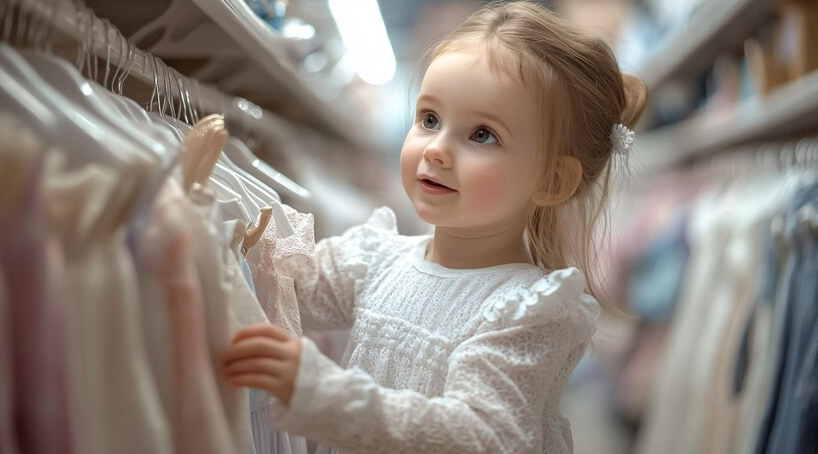
IDO Company Expertise
Client description
IDO is a world-famous brand of the company Miniconf (Italy) , which was founded in 1973, and has over 40 years of professional experience in the design and production of fashionable children's clothing. The company has a strong team of designers and purchasing managers, which allows it to maintain competitive prices and high quality products.

The main goal of the company is to take a strong position on platforms such as Aliexpress, eBay and others, offering high quality and stylish clothes for children.
Main goals and objectives
- Increase in sales on marketplaces by 50% during the first year.
- Expanding the range of children's clothing, including the latest trends.
- Establishing long-term relationships with suppliers to ensure stable supplies.
The main issue to solve
The main problem faced by the company IDO , there was a lack of a clear strategy for positioning and promoting products on marketplaces. The need to analyze the target audience and understand their preferences also came first.
Characteristics and interests of the target audience
Target audience IDO consists of parents of children aged 0 to 10 years. Key Features Include:
- 👨👩👧 Family values and safety.
- 🌟 Looking for quality and style at a reasonable price.
- 📱 Active use of mobile applications for purchases.
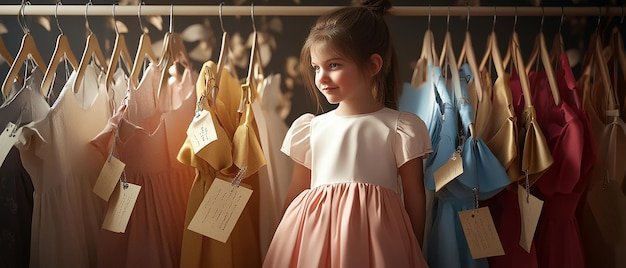
Key points of interest to potential clients
- High quality fabric, including hypoallergenic materials.
- Fashionable design that matches modern trends.
- Convenient and fast ordering on the Aliexpress and eBay platforms.
- Effective promotions and discounts.
Results achieved
Thanks to the development of a sales strategy and effective marketing, IDO:
- Increased sales by 75% in the first year.
- Increased repeat purchases by 40% thanks to loyalty programs.
- Agreed on cooperation with 5 new suppliers, which allowed us to expand the range.
"We believe that the right approach to analyzing the market and identifying the needs of our audience has led to unexpected successes," — says Gregorio Catalano, manager of IDO.
| Parameter | Result |
|---|---|
| Sales increase | 75% |
| Increase in repeat purchases | 40% |
| New suppliers | 5 |
| Early completion of goals | Yes |
Thus, the considered case IDO illustrates how a competent strategy and understanding of market needs can significantly increase the efficiency of sales of children's clothing on marketplaces .
.png)
Related FAQ: How to get started selling children's clothing on marketplaces - simple instructions
1. How to choose suppliers of children's clothing?
Choose suppliers based on their reputation, product quality, prices and delivery times. Conduct a competitor analysis and request product samples.
2. How to create a successful product range?
Study the needs of your target audience, assess the demand for various categories of children's clothing and select the most popular products.
3. What marketplaces are best to use to sell children's clothing?
The most popular marketplaces for selling children's clothing are Rozetka, Prom, Aliexpress, eBay and others. The choice depends on your audience and business requirements.
4. How to calculate unit economics for children's clothing?
Procurement, shipping, marketing, and platform fees must be taken into account. Compare these costs to the selling price to determine the margin.
5. How to prepare for the launch of children's clothing sales?
Prepare photos of products, describe their characteristics, determine prices and create a marketing strategy. Make sure you have all the necessary documents.
6. What features should be taken into account when selling on marketplaces?
Please pay attention to the requirements for the quality of images, product descriptions and the availability of certificates of conformity. It is also important to monitor customer reviews.
7. How important are customer reviews?
Reviews influence the product rating and customer trust. Positive reviews can increase sales, while negative reviews can decrease interest in your product.
8. How to promote your products on marketplaces?
Use paid and free methods such as advertising within the platform, promotions, discount programs and optimization of product cards for search engines.
9. Is it necessary to register a sole proprietorship to sell on marketplaces?
Yes, to legally trade and earn income you must register an individual business or legal entity.
10. How much inventory should you have for successful sales?
Determine inventory based on analysis of demand and current sales. Start with a small volume and increase it as interest in your products grows.
Thank you for reading and for becoming much more experienced! 🎉
Now you are a professional in selling children's clothing on marketplaces. Every moment spent studying was a step towards success. You know the secrets that can turn your startup into a flood of customers. I hope that after reading this, you will be ready to not only start selling, but also enjoy the process itself. Remember, success is not only numbers, but also the joy of children's smiles. Share your experiences and thoughts in the comments! 💬
Sincerely,
Larisa Shishkova
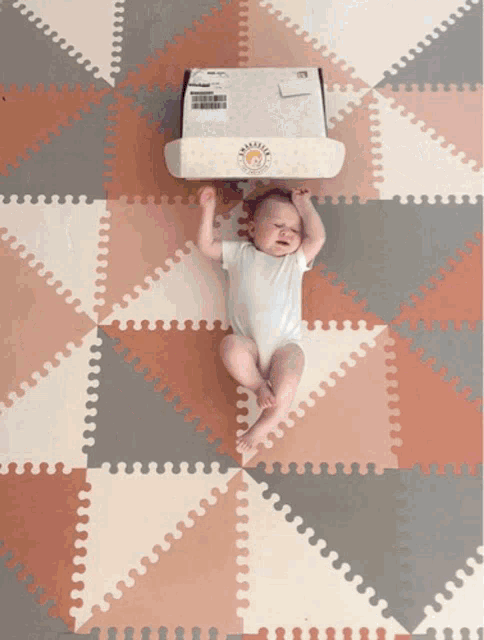
- Glossary
- Formation of an assortment of children's clothing
- Choosing reliable suppliers for children's clothing
- Step-by-step instructions for working with logistics schemes on marketplaces
- Features of selling children's clothing at Prom
- Features of children's clothing sales on Rozetka
- Unit economics of selling children's clothing
- Preparing to successfully sell children's clothing on marketplaces
- Step-by-step instructions for successfully selling children's clothing
- IDO Company Expertise
- Related FAQ: How to get started selling children's clothing on marketplaces - simple instructions
- Thank you for reading and for becoming much more experienced!
Article Target
teach readers the basics of selling on marketplaces.
Target audience
beginners and experienced salespeople who want to expand their business on marketplaces.
Hashtags
Save a link to this article
Larisa Shishkova
Copywriter ElbuzIn the world of automation, I am a translator of ideas into the language of effective business. Here, every dot is a code for success, and every comma is an inspiration for Internet prosperity!
Discussion of the topic – How to start selling children's clothing on marketplaces: simple instructions
Step-by-step instructions and tips for successfully selling children's clothing on marketplaces.
Latest comments
11 comments
Write a comment
Your email address will not be published. Required fields are checked *
















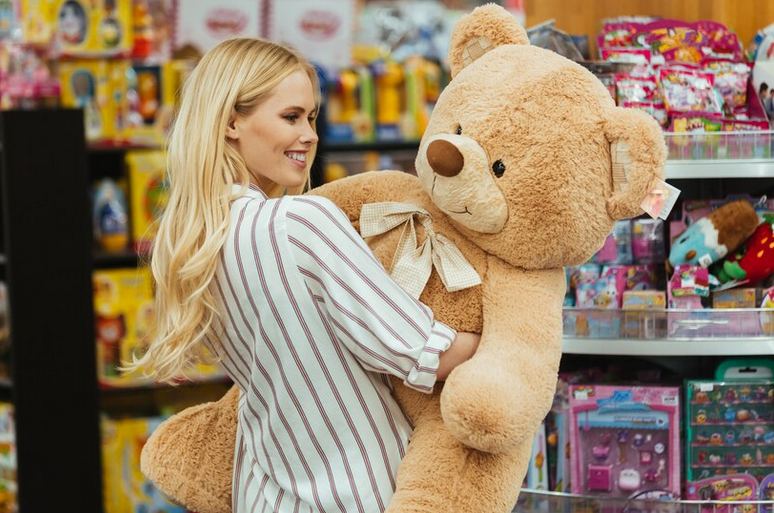




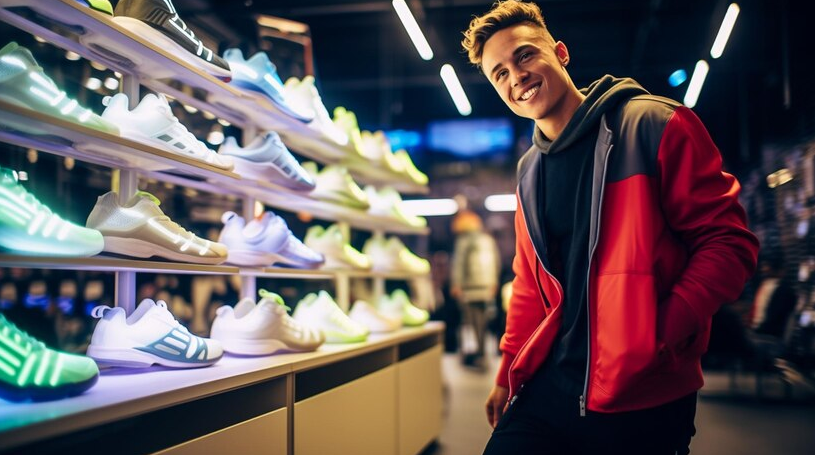





Liam
I'm curious, what do you think are the best platforms to use for selling children's clothing? I've tried a few but not sure which ones give the best results. 🤔
Anna
I think good visuals are important! In my opinion, high-quality photographs play a key role. 📸 How do you deal with this?
Marc
Great topic! I recently started selling on Etsy, but ran into problems with delivery. How are you doing with this? Any advice?
Валентина
I also agree with Anna! Do you have examples of successful photos that you could show? This is very interesting! 😍
John
I think it's important to choose the right niche. If, for example, you focus on eco-friendly fabrics, you can attract more customers. 🌱
GrumpyOldMan
All this advice is complete nonsense. Previously, they simply sold it at the market, but now all this is needed to sell another piece of junk. 🤨
Лариса Шишкова
I agree with you! As for photographs, it is worth focusing on the natural colors and textures of the fabric. Some buyers even choose products based on photos! 👍
Katarzyna
Great idea, Larisa! It is also important to have detailed descriptions so that parents understand what they are buying. 🤗
Carlos
Necessarily! And also don't forget to use keywords for your search. This can really improve the visibility of your products. 🔍
Emily
I agree with you! I also use social media for promotion. This is very effective and helps in sales! 📱
Viktor
I support the opinion about social networks. This not only drives traffic, but also creates a community around your brand. ⚡